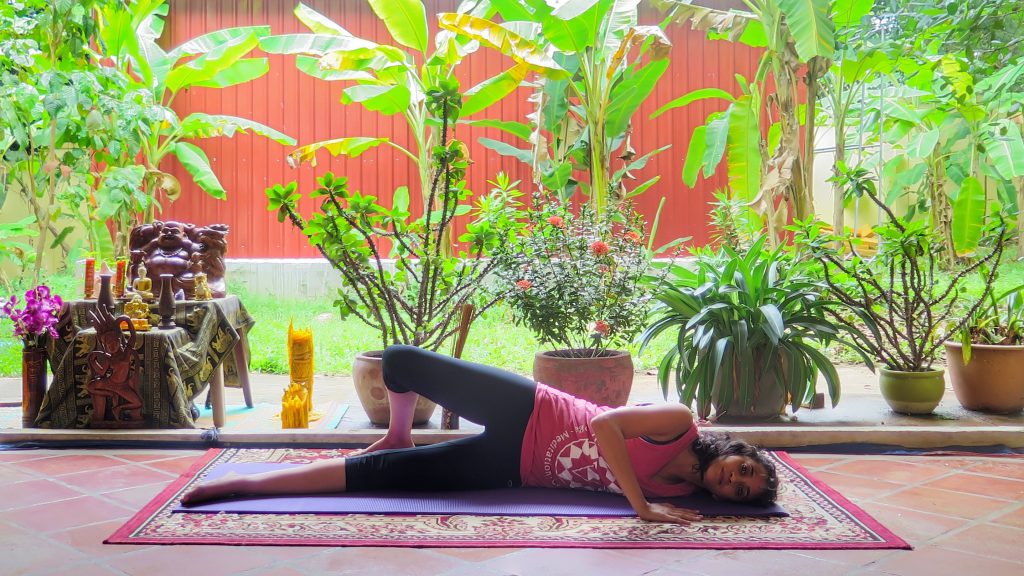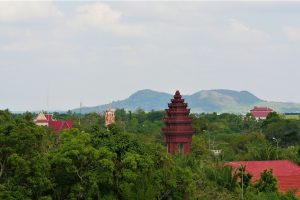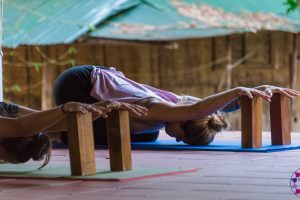What is Yin Yoga and Why Should You Do it?
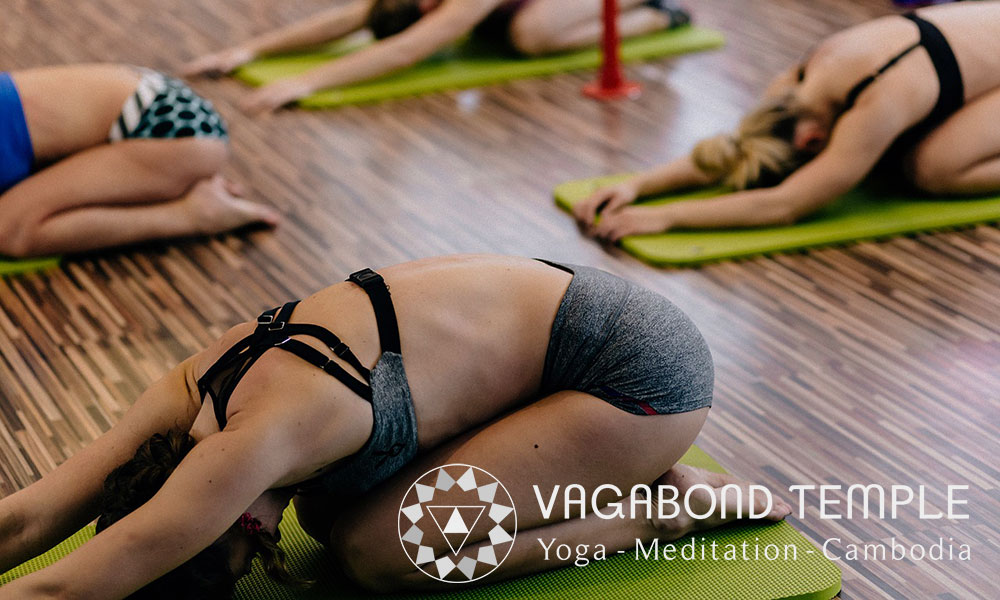
Yoga is all about balance. Balance in body, balance in mind, balance in life. Hatha yoga, the yoga commonly practiced in the Western world, is comprised of “ha” (“sun” in Sanskrit) and “tha” (“moon” in Sanskrit). This balance is better known by their names in the Chinese tradition, Yin and Yang. Yin is passive, soft, and slow while Yang is directive, hard and fast.
As Yoga was passed from the eastern world to the west, the careful balance of Yin and Yang began to skew towards Yang to match up with the society we live in. We work in competitive environments, run from one social engagement to the next, eat heavy foods, and sleep less than we should. Yin, in our age and in our yoga, has lost its prevalence. The reality is that we need Yin more than ever as an antidote to our Yang lifestyle.
Yin Yoga is a passive, rejuvenating practice that works your body in a much different way than a Yang class. Yin is not about activating the muscles like in Yang, but rather letting the muscles relax. It asks you to remain still in poses for long periods, typically on the floor, allowing the muscles to relax. When your muscles relax, your fascia, which is connective tissue that envelops the body, can open and lengthen, thus strengthening the connections between muscles and bones.
Benefits of Yin Yoga
There are many benefits to Yin practice. Because of the slower pace and longer holds of passive poses, it is more easily accessible, you have a greater opportunity to experience deep relaxation in body and mind, and there are many practical physical rewards.
Relaxation Benefits
By simply surrendering, letting earth and gravity compress your body into the ground and do the work for you, you activate the parasympathetic nervous system. This is one of two divisions of the autonomic nervous system, often referred to as the rest and digest system; it is designed to conserve energy through relaxing your organs, specifically your digestive system, and slowing your heart rate. This relaxation can foster a deeper connection to breath and body, inducing a powerful meditative state.
Physical Benefits
This style of yoga also has many benefits for the body outside of the relaxation. Holding poses for longer creates a deep, safe stretch that can lengthen the fascia to improve overall flexibility and range of movement in our ligaments. The elongated submission to gravity in the Yin poses compresses the bones together, improving bone density, reducing the odds of ailments like arthritis or broken bones. Mobilizing the fascia that envelops the bones prepares your body for situations of stress – for example, having strong, malleable fascia in your ankle could be the difference between a minor roll of your ankle and a serious sprain.
Accessibility Benefits
Yin also has the advantage of being very accessible. For older students, Yin is especially valuable. Fascia in the elderly begins to dry out, which can be painful and result in limited range of movement, oftentimes manifesting as a slight reduction in height. Even for young people who are more susceptible to injuries or are simply interested in a practice demanding a bit less strength and flexibility, incorporating Yin into your routine can make a major impact in how much you get out of your yoga experience.
Below is a Yin Yoga sequence that you can try at home.
Yin Yoga Sequence:
Dragon
Front knee bent at a 90 degree angle with your back knee on the ground, directly under the hips, top of the foot on the mat. You can rest your arms on your knee. 3 minutes each side.
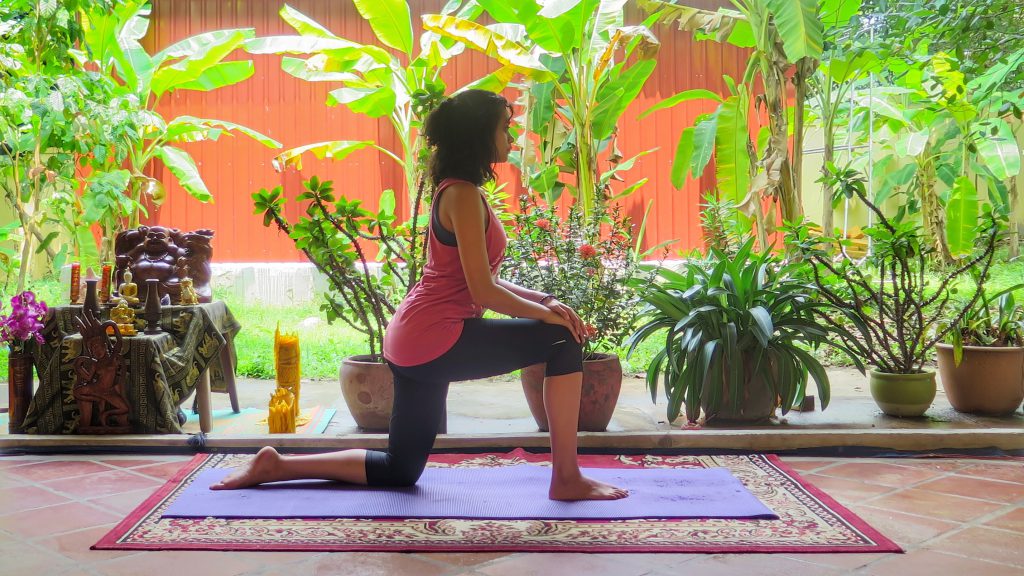
Wide-Legged Dragon
Bring your hands to the ground and foot to the outside of the mat and allow your foot to fall open so that only the outside edge of the foot is on the mat. 3 minutes each side.
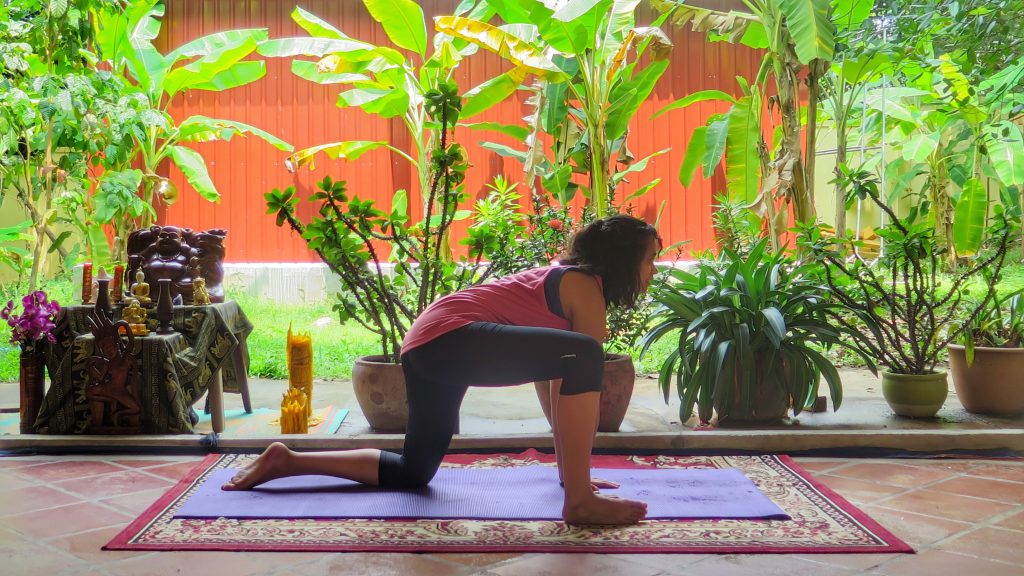
Sleeping Pigeon
Bring your bent knee to inside of your wrist and lay your shin parallel to the mat. Release the back leg down onto the mat, placing your hands underneath your shoulders. You can rest on your forearms or your chest and relax your chest as close to the mat as possible. 4-5 minutes each side.
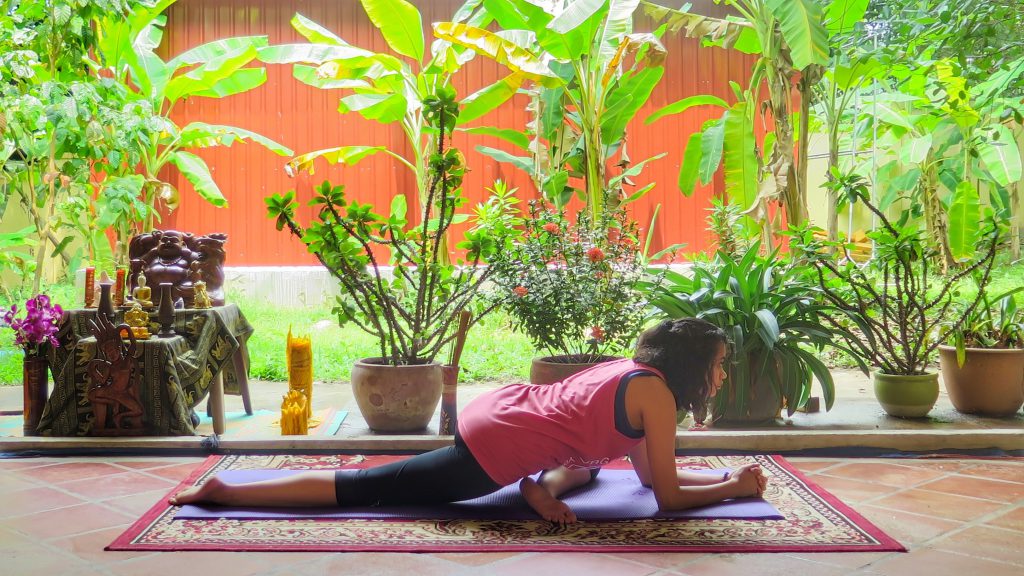
Awake Pigeon
Place your hands underneath your shoulders and press up, straightening your arms – 1-2 minutes each side.
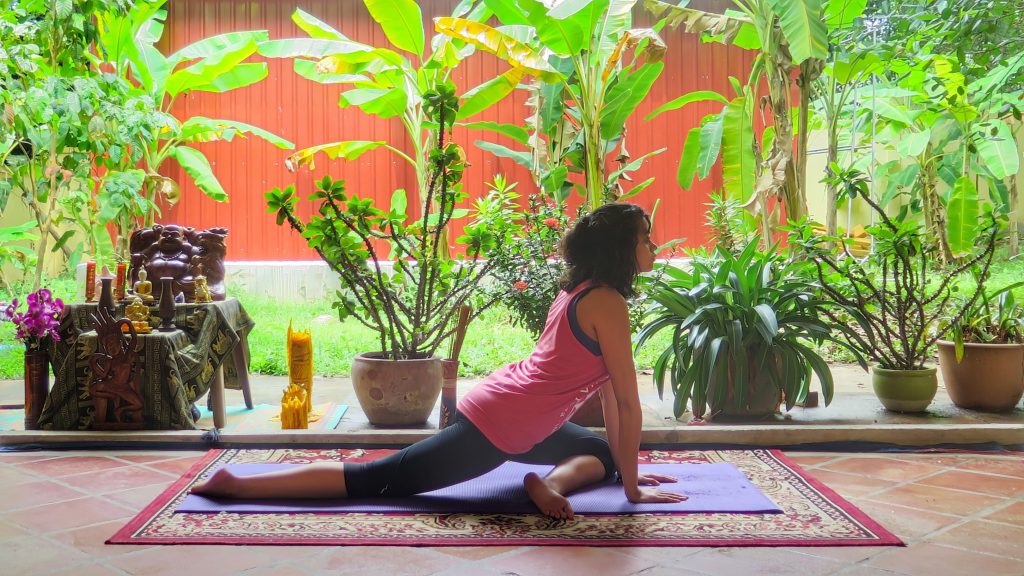
One-Legged Happy Baby
Lying on your back, hug both knees into the chest, release one leg down to the mat and grab the outside of the foot of the bent knee and pull it into your armpit. Relax back down onto the mat and hold. Do both sides for 1-2 minutes.
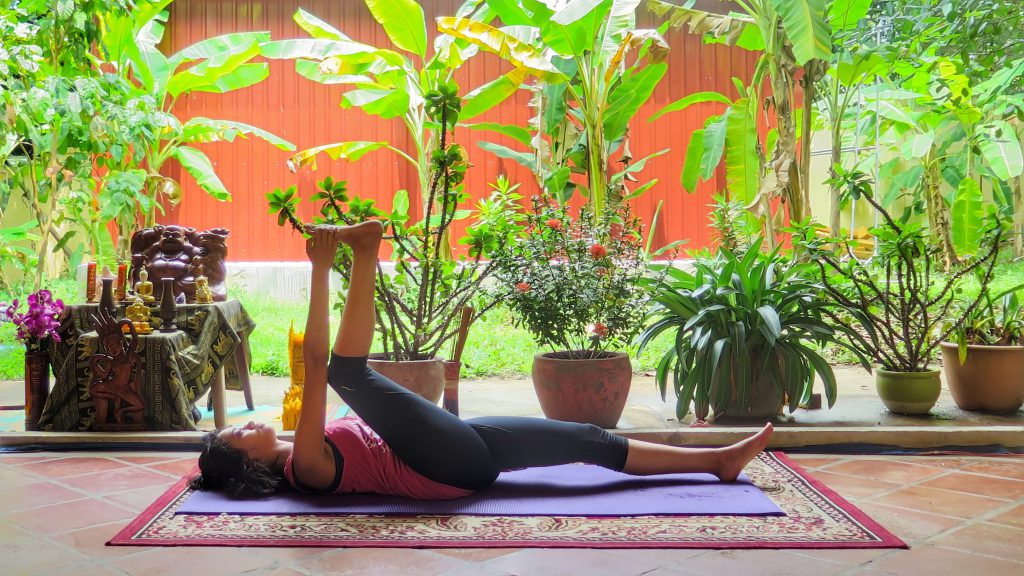
Full Happy Baby
Same as One-Legged Happy Baby, except now grab both of your feet.
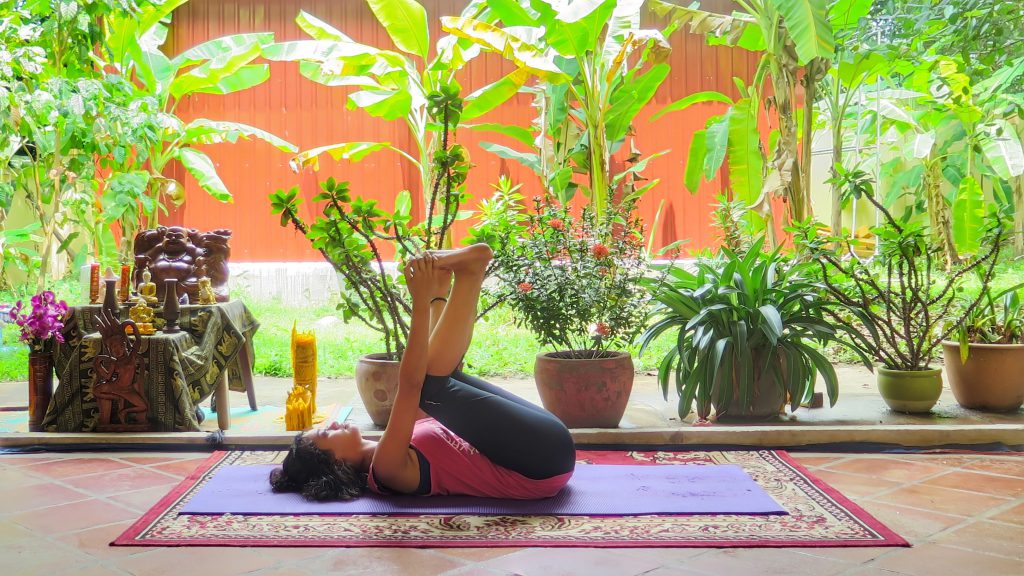
Sphinx
Roll back over to your belly. Place your elbows directly under your shoulders, hands coming out in front of you straight ahead, hands spread out fingers wide. Hold for 1-2 minutes.
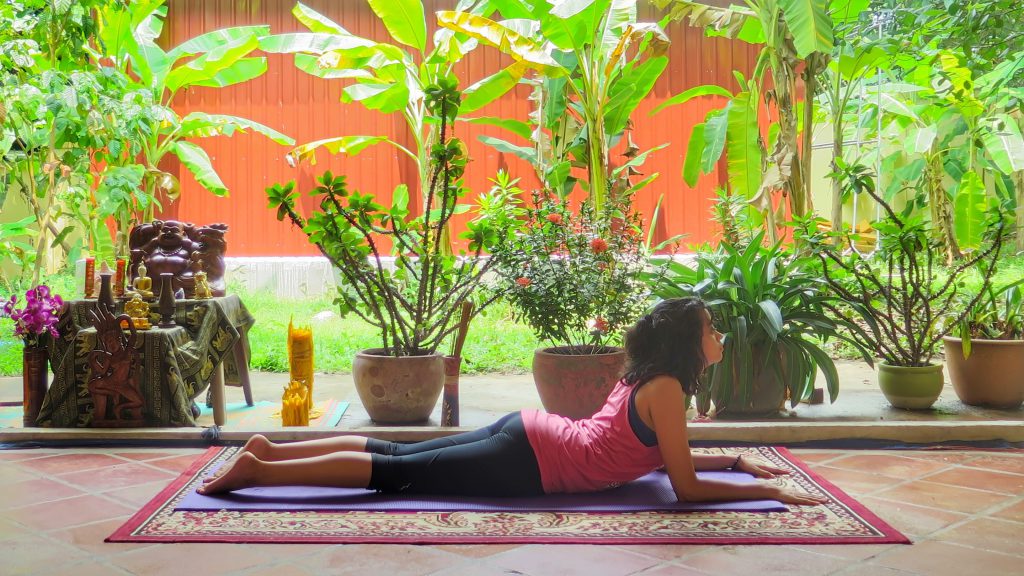
Wide Sphinx
Take arms past the outside corners of our mat and hold for 1 minute.
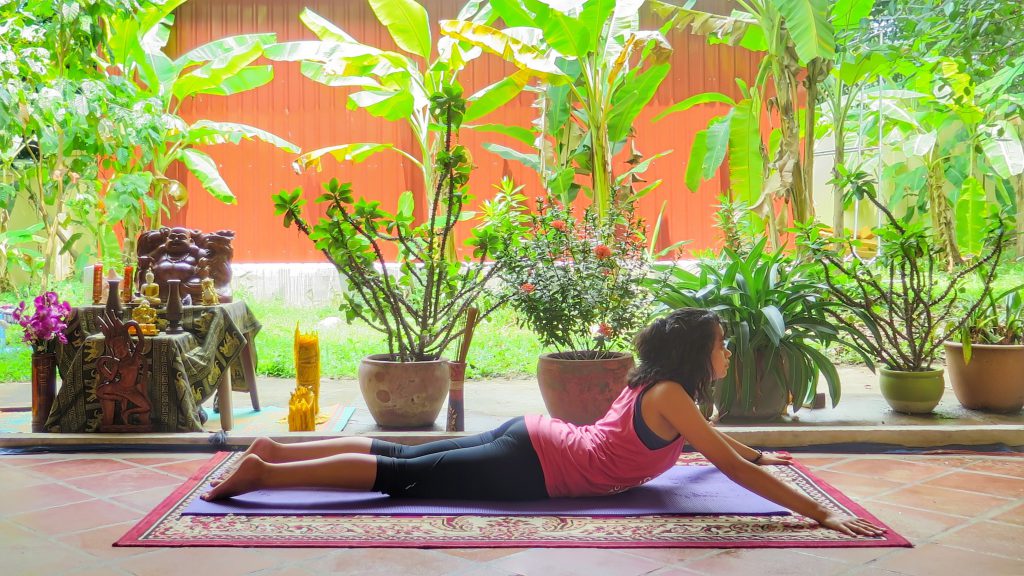
Shoulder Pigeon
Lay down on your belly, place right arm out to the side in line with your shoulder, palm flat on the mat, look over your left shoulder, twist your body upwards taking your left foot, placing it to the outside of the right leg, twisting up and over, bending the left knee with the foot flat on the ground. Repeat on the other side.
